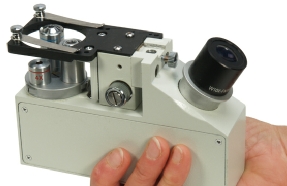



A common error for the novice microscopist is to use too high a magnification. The more a microscope magnifies an object, the smaller the part of it that can be seen at any one time. The smaller this area the more difficult it is to decide exactly what the object is. For example a spiders leg magnified x1000 shows only a very uninteresting area of brown or black colouring depending on the exact piece which is being looked at. In many ways this is rather like trying to identify the White Cliffs of Dover from 2 inches away! Only the lowest magnification needed to see the detail required should be used in microscopy. A spiders leg yields far more information magnified by as little as say x20. Remember individual human blood cells can be seen at x500, and the only items needing x1000 are bacteria and some of the very small fungal spores.
There are basically two types of microscope available, the low power stereomicroscope (produces a 3D image of a whole object), and the high power or compound which can magnify up to x1500 and is used for slide preparations.
For further information on each type please visit the dedicated pages below.
find us on youtube, facebook and twitter















Handling Microscope Solutions

Available with a wide range of accessories.
Biological




Zoom magnification, long arm systems and LED illumination.
Stereomicroscopes




A series including Inverted and DIC.
Metallurgical




Microscopes designed for specialist applications.
Specialist








Ex demonstration and used microscopes and microscopy equipment .
Pre owned


